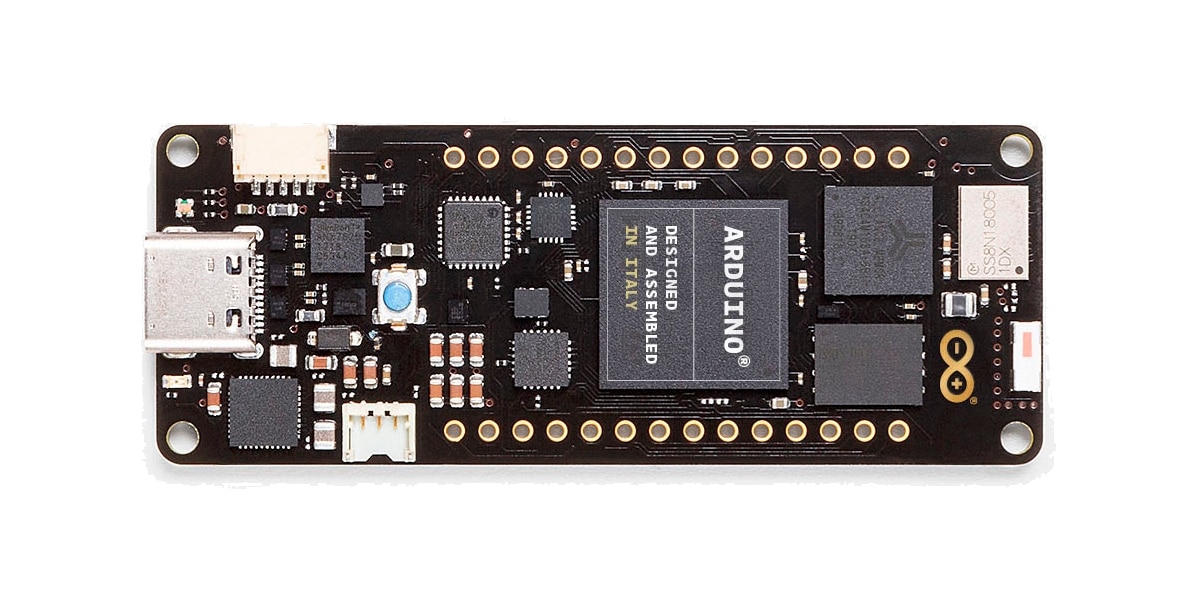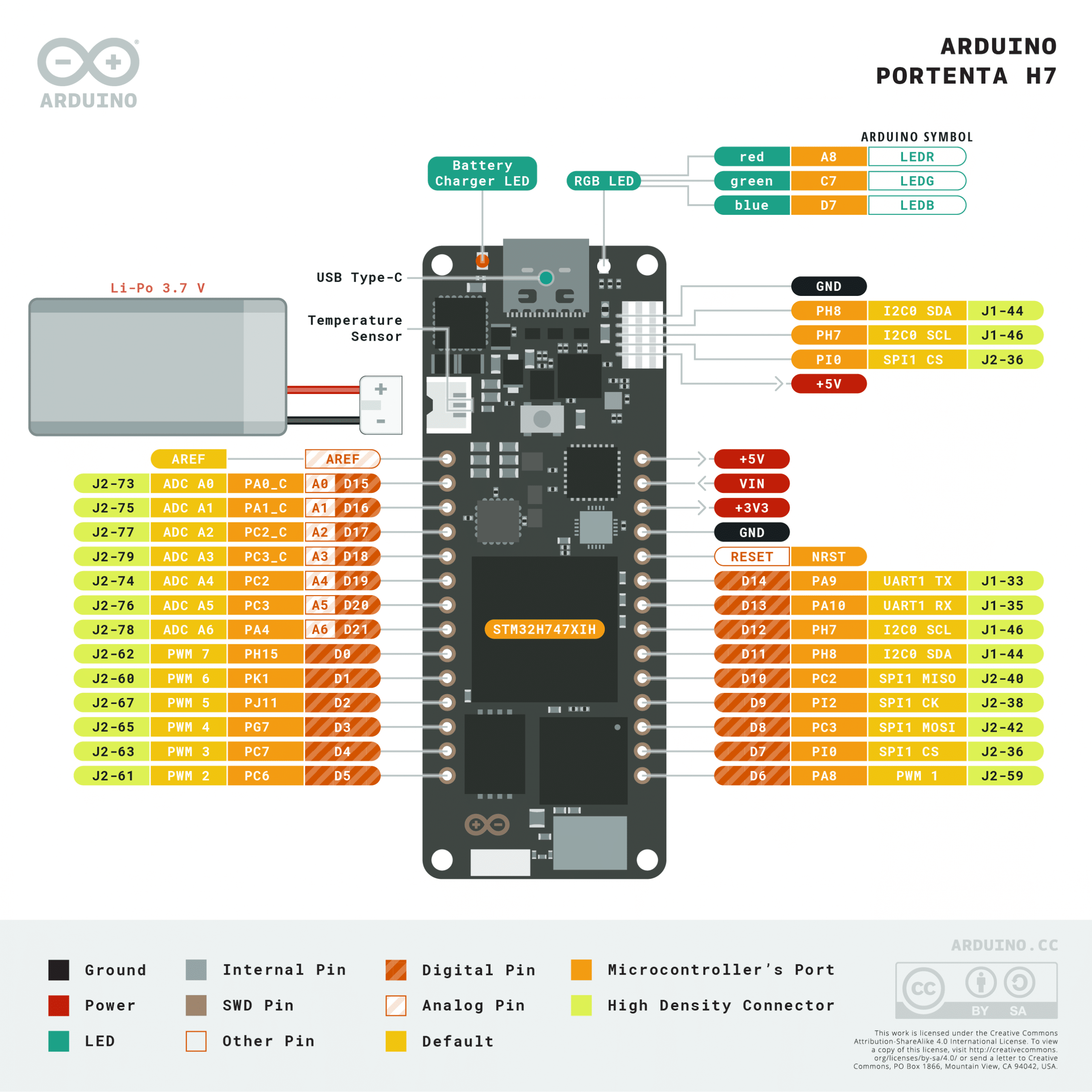
At the Consumer Electronics Show in Las Vegas, great technological innovations were presented. Arduino also took advantage of showing some of its hidden weapons that it will deploy. And it did not go unnoticed among smartphones, smart TVs, electric vehicles, and IoT home automation devices. The novelty was called Power H7 and it was the center of attention for lovers of the famous development platform.
It is true that Arduino has focused so far on the educational market and for makers or DIY lovers. Even their plates marked Pro can also be used in this consumer environment for certain projects. Although it is true that there are some professional projects that have used Arduino as a base ...
But now they go a bit further with the Portenta H7 and have designed it especially with professionals in mind. Those people or companies that want to develop hardware projects quickly and robustly to industrial applications.
What is Portenta H7?
Development board Power H7 it flaunts its name and integrates some pretty powerful hardware. With built-in wireless capabilities (already built in), capabilities to run scripts written in Python and JavaScript, and loaded with resources. All for a price of 89.90€. Being very new you can already order it, since it is in pre-order on the official Arduino website.
Although it is a price that can be somewhat expensive for makers and the education sector, these are not excluded from its use. What's more, there are some other development boards and SBCs that have similar or even higher prices.
Yes, the qualities from Portenta H7 make this board a far cry from traditional Arduinos. And it is that the sector to which it is directed demands it, since some 8-bit MCU chips would not be enough, nor would certain limitations of other boards of the family. Somewhat more powerful microcontrollers are needed in industry.
Another feature that makes it especially interesting is that not only can it be programmed with high-level languages such as those mentioned above and real-time tasks, it also supports AI (artificial intelligence) with TensorFlow, while maintaining low latency operability thanks to its optimized hardware. For example, it would be possible to run code compiled for Arduino alongside MicroPython and keep the kernels in communication with each other.
Use a Portenta Carrier Board format to transform the H7 into a eNUC, that is, a powerful minicomputer that could do everything you do now with Arduino and more, such as using computer vision algorithms for an automatic flight mechanism, while maintaining low-level control of a motor, rudders, etc. .
In short, a plate specially designed for industry or as a laboratory material, the ability to use computer vision, PLCs, industry ready user interfaces, robot control, critical application devices, high start-up speed (ms).
2 cores in parallel
The central processor of the Potenta H7 is a dual-core STM32H747 from STMicroelectronics. French-designed chips from the STM-32 family that bundle 32-bit ARM-based microcontrollers inside the die. In this case, the chosen processing cores are the Cortex M7 running at 480Mhz and a Cortex M4 running at 240Mhz.
These two cores are releases via a mechanism called Remote Procedure Call that allows seamless function calls on the other processor. Both processors share the peripherals and can run:
- Arduino IDE sketches just like another Arduino board would. It will do it on ARM Mbed OS. This is an embedded operating system for this platform that is used in IoT devices with Cortex-M.
- You can also run native apps for Mbed.
- Custom code MicroPython and JavaScript via an interpreter of these interpreted languages.
- Y TensorFlow Lite.
Graphic accelerator
Another of the features included in Portenta H7, and one of the most surprising as well, is the possibility of connect the board with an external monitor, as if it were a computer. In this way, it allows you to create your own dedicated embedded computer with its own user interface.
And for that to be possible a on-chip GPU inside the STM32H747. In this case it is a Chrom-ART Accelertor, with its own encoders and decoders for JPEG.
Pinout
It has a large number of pins at your disposal to program and use for your projects. Portenta H7 has 80 pins high-density connection on the board. This gives the board good scalability and great flexibility in terms of the applications and possible updates you need. They will be compatible with many of the electronic elements seen on this blog and more.
Connectivity
Portenta H7 motherboard also includes connectivity WiFi and Bluetooth, to be able to connect it to networks to interoperate with other elements. Therefore, you do not need additional modules such as other Arduino boards. Of course, it also supports other interfaces such as UART, SPI, Ethernet, I2C, multipurpose connection via USB-C (Display Port for monitor, power delivery for OTG devices, ...), etc.
More hardware details
Portenta H7 (also identified by the code name H7-15EUNWAD) comes with the following:
- 8MB SDRAM memory
- 16MB NOR flash memory
- 10/100 Ethernet Phys
- USB HS
- NXP SE050C2 Crypto chip, for security
- Murata 1DX Module for WiFi / Bluetooth
- External antenna
- DisplayPort connector over USB-C
- Power supply with 5V PSU (circuits operate at 3.3v)
- Support for Li-Po Single Cell batteries, 3.7V, 700mAh minimum
- Operating temperature range between -40 and 85ºC
- MKR head for industrial shields
- 8-bit camera interface up to 80 Mhz
- Integrated ADC / DAC
- Power consumption in stand-by mode 2.95 μA (Backup SRAM OFF, RTC / LSE ON)
Datasheets and additional documentation
If you need more details about the Portenta H7 and its components, you can download these documents or datasheets contributed:

